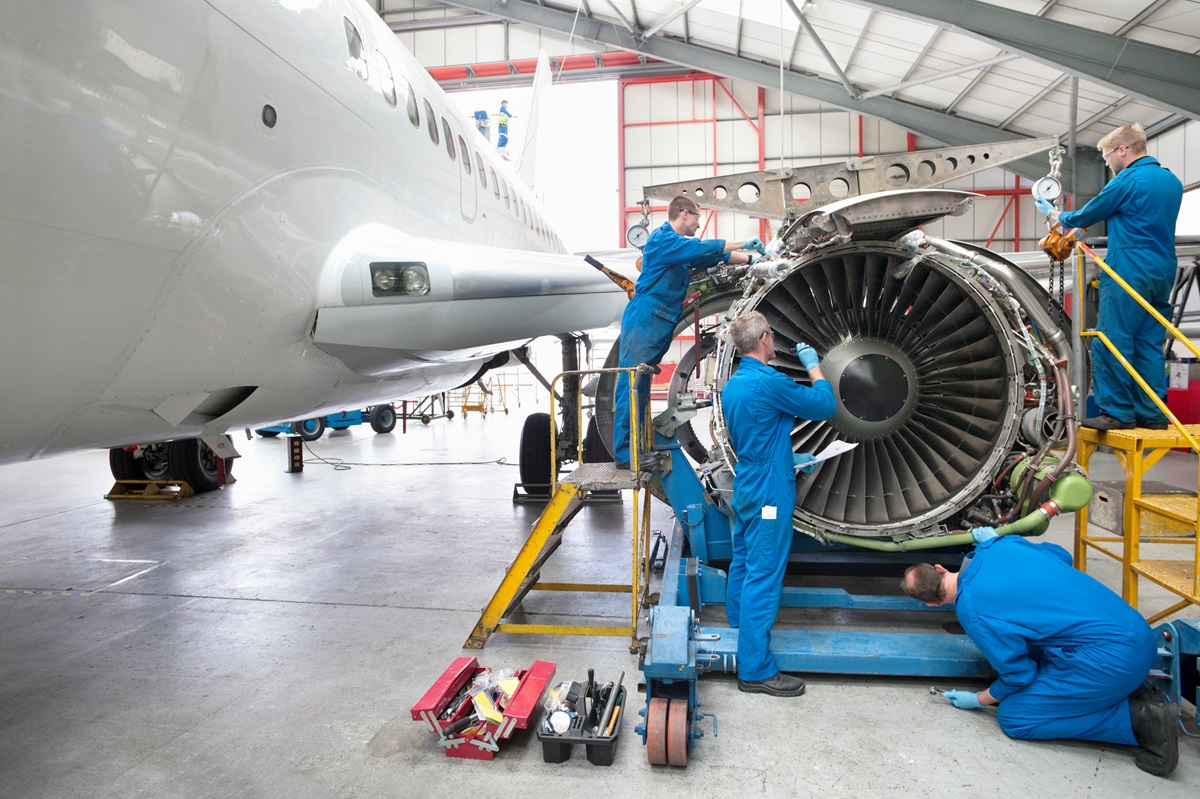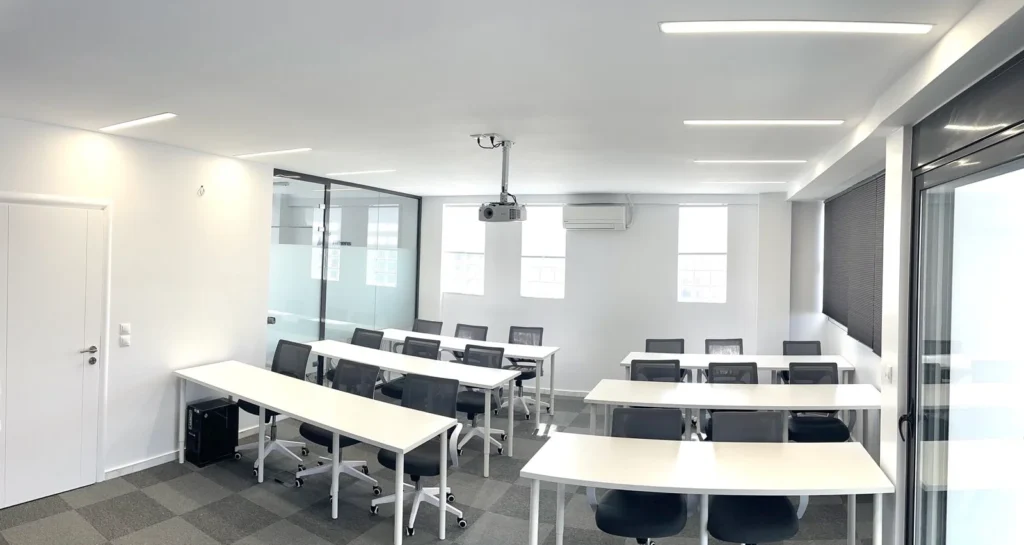This program is meticulously designed to equip future mechanical engineers with the comprehensive education required to become Licensed Aircraft Maintenance Engineers, certified by the HCAA under EASA regulations. Our EASA Part 147 Full Basic Course for Part-66 licenses covers all essential topics, providing the necessary knowledge through a blend of theoretical instruction and hands-on practical training.
Our experienced instructors use industry-standard tools and procedures to ensure graduates are well-prepared for the demands of the aviation maintenance industry. The AML program includes 17 modular subjects (Modules 1 to 17), featuring theoretical classroom lectures, practical workshop tasks, field visits, and module examinations.
Upon completing the modular studies, trainees can immediately undertake On-Job-Training (OJT) with one of our affiliated companies Athens Aeroservices in Greece’s aircraft line maintenance sector. This ensures trainees can complete the program and obtain their license without unnecessary delays.
To qualify as a Licensed Aircraft Maintenance Engineer (LAME), candidates must pass the approved 13 module exams (for B1.1), covering 2400 learning hours of theory and practical training, followed by a 2-year OJT period. Upon successful completion, trainees will be issued their Basic License and can pursue type approval for various aircraft types. As Licensed Aircraft Engineers, they play a crucial role in ensuring the serviceability and safety of aircraft operations.
• Educational Background: A high school diploma or equivalent, with strong grades in mathematics, physics, and English. Some programs may require additional prerequisites or entrance exams.
• Medical Fitness: A medical certificate confirming that the candidate meets the necessary health and fitness standards to perform aircraft maintenance duties safely.
• English Proficiency or : Since the training and exams are conducted in English, candidates must demonstrate certificate in English, often through standardized tests or previous educational qualifications. Intermediate level B1 B2, Advanced level C1 C2.
• Passion and Interest in Aviation: Demonstrating a keen interest in aviation and aircraft maintenance through previous experience or hobbies can be beneficial.
You need to complete a recognized training program from an EASA Part-147 approved organization as Athens Aviation Training Organization and pass the required examinations for the Part-66 license. Additionally, practical maintenance experience is essential.
What is an EASA Part-66 license?
An EASA Part-66 license is a European certification for aircraft maintenance engineers, enabling them to certify and release aircraft back into service after maintenance.
The main categories include A, B1, B2, B2L, and L. Category A allows limited certification of minor scheduled line maintenance. B1 covers mechanical systems, B2 covers avionics, B2L is for specific avionics systems, and L is for light aircraft.
Focus: The B1 license is primarily focused on mechanical aspects of aircraft maintenance. It covers airframe and engine systems, including structures, propulsion systems, mechanical and electrical systems.
Privileges: B1 license holders are authorized to perform maintenance tasks and release aircraft to service following maintenance on mechanical systems. They can also certify simple avionics tasks that are in line with mechanical systems.
Category B2 License:
Focus: The B2 license specializes in avionics, which includes all electronic systems in the aircraft, such as communications, navigation, radar, and instrument systems.
Privileges: B2 license holders can certify maintenance work done on aircraft avionics systems. They are skilled in troubleshooting and repairing electronic components and systems.
Choosing between a B1 and B2 license depends largely on your interests and career goals:
-B1 License: If you are more interested in the mechanical and structural aspects of aircraft, including engines and systems like hydraulics and pneumatics, a B1 license might be more suitable. B1 engineers are often involved in more physical maintenance work and structural repairs.
-B2 License: If you have a stronger interest in electronics, electrical systems, and cutting-edge technology, a B2 license would be more appropriate. B2 engineers work more with the sophisticated avionics and electronic systems of the aircraft.
Career Prospects:
-B1 Engineers: Generally have a wider scope of work, especially in smaller organizations or on smaller aircraft where they might handle both mechanical and basic avionic tasks.
-B2 Engineers: May find more specialized roles, particularly in large organizations or with airlines where specific skills in avionics are required.
In terms of career opportunities, both licenses are valuable and necessary in the aviation industry. However, having both B1 and B2 qualifications can significantly enhance job prospects and career growth, making you versatile and highly valuable to employers
Subjects include aviation legislation, aircraft aerodynamics, structures and systems, electrical fundamentals, and avionics, among others.
The duration depends on the license category and the training organization but typically ranges from 2 years theoretical and 2 – 3 years practical training, including both theoretical training and practical experience.
OJT is hands-on training that provides practical experience in an actual maintenance environment. This is required for Part-66 license candidates to demonstrate their competence in performing maintenance tasks.
While primarily recognized in EASA member states, many non-EU countries also recognize EASA licenses through bilateral agreements.
Detailed information can be found on the EASA website https://www.easa.europa.eu/en/the-agency/faqs/part-66#category-get-a-part-66-licence






